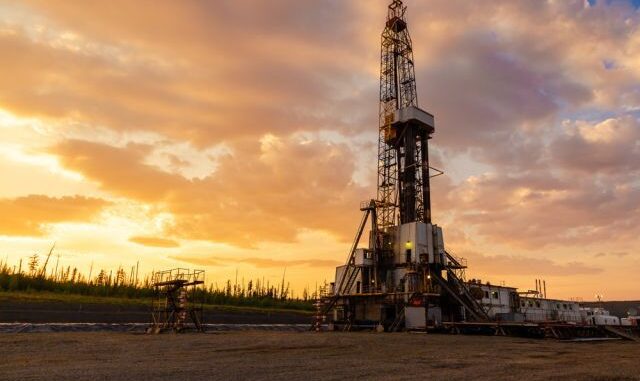
ENB Pub Note: This article from Irina Slav’s Substack is on point on the oil glut in the news. We recommend following her on her Substack. As we say in Texas, the math ain’t mathing. First, looking at OPEC+’s additional increases, if they can actually produce them as well as the simple fact we are below our 5-year averages on storage. Very much like the old commercial “Where’s the Beef?” I have to ask, Where’s the Oil Glut?
Goldman: Brent crude will average $52-$56 in 2026. Supply will exceed demand by 1.9 million bpd.
FGE: Oil could tumble to below $60 by the end of the year and end up in the mid-$50s next year.
S&P Global: Brent set for $55 by year-end.
Welcome to season 57, episode 351 of The Glut Games, a spinoff from Wishful Net-Zero Thinking.
The above three predictions were made earlier today at the Asia Pacific Petroleum Conference, which just started in Singapore, meaning that by the time I finish writing this post, there will probably be half a dozen more predictions about how oil prices are going to tank, and tank hard because OPEC is adding more production.
Obviously, more OPEC production would mean more glut because a glut is a given, except it isn’t because there are some “ifs” in the equation but it’s totally safe to assume the more bearish among these “ifs” will materialise because it makes perfect sense and a glut will follow, pushing oil prices down. Hard, of course. [insert heavy sigh here]
Predictions of an oil glut should become an Olympic sport, where participants compete on the edge of plausibility, balancing their predictions in such a way as to avoid losing all credibility. That takes some skill. Meanwhile in the real-world market, there is no glut. But few have the guts to say it because, it seems, predicting healthy oil demand is the opposite of the done thing.
The done thing is making assumptions, adding a couple of “ifs” for insurance and dumping all responsibility at either OPEC’s or U.S. shale’s door. There is no originality left in this world and this is a mournable development. Worse, reliable information about future trends in oil consumption has become as rare as common sense in European politics.
Here are some quotes for a taste of the general mood.
Goldman: “While a full 1.65 mb/d unwind is plausible, we assume the group will leverage its flexibility to pause quota increases from January 2026 under our assumption that OECD commercial stocks start rising noticeably in 2025 Q4.”
What the basis is for that assumption I have no idea but I know that nothing suggests these stocks are going to start rising, especially noticeably, in the fourth quarter. The reason I know is that Oxford Energy recently published a report looking into, and I cannot stress this enough, the physical oil market, including inventories, floating storage, refining rates, the lot.
So, according to Oxford Energy, OECD stocks have only grown by 4 million barrels since the start of the year. There is no missing zero after the 4 and there is no missing “per day” after “barrels”. OECD inventories went up by a measly 4 million barrels and they are 122 million barrels below the five-year average. But sure, they’re going to swell by many, many millions of barrels over three months because Goldman assumes so.
But if you think Goldman makes questionable assumptions, wait till you see S&P Global’s approach, which I shall call the Triple If Approach.
“If there’s a massive surplus, if Russian oil continues to flow into the market, if stock-building stops and some of this stuff goes into commercial inventory, contangos blow out, we can see a lower price than that,” a senior exec from the firm said at the APPC, the final “that” referring to a projected Brent crude price of $55 per barrel.
I used to think forecasting the prices of anything was a difficult job but apparently, it’s enough to mention all the factors that could push the price in a certain direction, list them, and predict the price. You’re safe from ridicule because you said “if”.
Then there is the Modality Approach as demonstrated by FGE’s chairman emeritus: “I would say below $60 in the first quarter of next year is possible, mid-$50s is definitely possible, and then that will have a big impact on the US shale production. So the supply side will go down, which gives a boost to the prices also.” It is also possible that I drop dead before the end of this sentence but the likelihood of that happening is relatively low. And now it’s non-existent.
Everyone who’s anyone is talking about an oil glut. The IEA, the EIA, and every investment bank that has commodity analysts on its payroll, which is all of them. The only difference between all these is in the amount of the glut, the IEA being the most bearish, of course, with a monstrosity of 3 million bpd, and the EIA being the least bearish, pegging the glut at 1.6 million bpd. Unless…
Unless is a word that has been overlooked in favour of if in oil price speculation. It could be because it’s a longer word and as such harder to remember. It could be because it has an aura of warning, which is the only appropriate aura for oil price speculation.
Anyway, here’s a sample of unlesses that, despite being quite pertinent to oil price forecasting, only tends to be mentioned in passing.
There will be a glut unless demand picks up despite Trump’s tariff party, or once again surprises with strength on Trump’s own turf, like it did last year.
There will be a glut unless OPEC stops adding barrels to its collective production (which OPEC may very well do whenever it sees fit, as history teaches us).
There will be a glut unless something goes horribly wrong with the EV revolution (which is already happening.) This just in: “Green group Transport & Environment cut sales forecasts for all-electric cars in Europe to 2027 by 2 million vehicles following the EU decision to give carmakers two extra years to comply with stricter CO2 emission limits, in an updated report published on Monday.”
There will be a glut unless Trump gets his way with Russian oil importers, which he just might, if we’re talking about Europe, which currently imports close to 600,000 bpd of Russian crude. As we speak, EU Weighs New Sanctions on Russia to Hit Banks and Oil Trade and is “hoping to coordinate some of its latest measures with the US”. I am stunned by the speed of reality proving me right, not that it was too hard to be proven right on this.
That’s a sufficient number of unlesses to take the stream of glut predictions with a couple of pinches of salt. The twist: the glut was supposed to materialise this year. Indeed, the IEA predicted one of 950,000 bpd in December 2024. Goldman saw the glut at 800,000 barrels daily. S&P Global predicted it at 1.8 million bpd for the second half of this year.
Yet judging by prices, there isn’t a glut, at least not one of such proportions — even with the constant stream of glut-mongering. The stream, in fact, could become a problem for future supply, as noted by noted Reuters oil bear Clyde Russell, who warned OPEC and the IEA that they have become too cautious in their demand outlooks. If the guy who interprets a jump in Chinese oil imports as bearish news for prices says someone’s being too cautious, then that someone is probably being outright wrong.
My personal problem with this is that doomglut predictions for oil make oil producers be cautious. Then, when demand surprises by being stronger than expected, prices tend to soar. And that’s bad news for us regular mortal consumers.
For a final touch of oil price projection disorder, here are two more fresh headlines: China oil demand to peak in 2027, up 100,000 bpd this year, state researcher says, but China’s EV and hybrid sales growth at slowest in 18 months
Avoid Paying Taxes in 2025
Crude Oil, LNG, Jet Fuel price quote
ENB Top News
ENB
Energy Dashboard
ENB Podcast
ENB Substack






